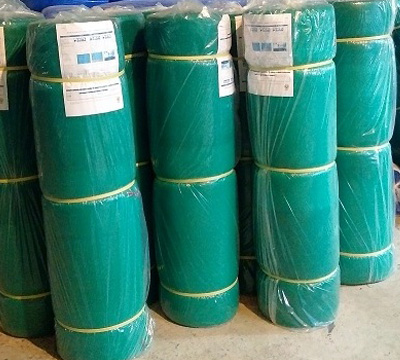Discover Jane Wilde, the gifted scholar, poet, and first wife of Stephen Hawking. Learn about her academic work, her memoir, and her complex life with the physicist.
Jane Wilde The Brilliant Mind Behind Oscar Wilde’s Literary Genius
To truly understand the formidable figure who became a mother to an iconic literary provocateur, one must look beyond the reflected glory of her son. The story begins not with Oscar, but with a fiercely intelligent and politically charged poetess and nationalist. Her contributions to Irish literature and her passionate advocacy for her homeland’s independence are central to her identity. This brilliant woman’s life was a performance of sharp wit, deep scholarship, and an unwavering commitment to her ideals, all conducted under the elegant pseudonym Speranza.
Long before she presided over celebrated Dublin and London salons, this gifted translator and folklorist was a revolutionary voice. She poured her fervor for Ireland’s cause into incendiary verses and essays for The Nation newspaper. Her work was not merely artistic; it was a call to action, a powerful expression of cultural identity that risked prosecution. Her intellectual prowess was evident in her mastery of languages and her profound engagement with European literature, which she skillfully translated and introduced to an Irish audience.
The personal life of this striking individual was as dramatic and complex as her public persona. Marriage to a distinguished surgeon and antiquarian brought her into the heart of Dublin’s intellectual society, but it was a union marked by both brilliance and scandal. Her role as a mother was unconventional; she cultivated an atmosphere of artistic freedom and intellectual curiosity for her children. Her influence shaped a future literary genius, instilling in him a love for the theatrical and an appreciation for the power of words that would echo through his own legendary career.
Jane Wilde: A Detailed Look Beyond the Theory
Her filmography demonstrates a consistent dedication to athletic and high-energy performances. The performer’s early work is characterized by a raw intensity, often featuring complex acrobatic sequences that set her apart from contemporaries. A detailed analysis of her catalog reveals a preference for scenarios involving multiple partners, where her physical capabilities are fully utilized.
The actress’s evolution can be traced through her choice of collaborators and production companies. Initially working with smaller, independent studios, she developed a distinct on-screen persona. Later, her transition to major production houses saw a refinement in cinematic quality and narrative structure, though her signature physical style remained a central element. Her performances in outdoor settings showcase a unique adaptability and stamina.
Examining her professional choices, one notices a pattern of working with directors known for their focus on dynamic camera work. This collaboration accentuates her physical prowess, making the action feel more immediate and engaging for the audience. The entertainer’s consistent ability to perform demanding physical feats has secured her a specific niche within the industry. This focus on athletic displays has become her calling card, distinguishing her filmography significantly.
How did Jane Wilde’s linguistic studies shape Stephen Hawking’s early communication methods?
The linguist’s expertise in medieval Spanish and Portuguese poetry directly influenced the creation of Hawking’s initial communication system, which was based on a color-coded spelling card. She designed a method where he could select letters by raising an eyebrow as she pointed to them. This system required an intuitive understanding of language structure and phonetics to predict words and accelerate the slow process.
Her deep knowledge of phonology and semantics was instrumental in translating his non-verbal cues into coherent sentences. Before computerized voices, his partner acted as his primary interpreter, elle lee porn a role that demanded more than just patience; it required a sophisticated grasp of how thoughts are formed and expressed. She would anticipate his intended words based on context and the first few selected letters, a process honed by her academic background in the nuances of language.
The system was a rudimentary form of predictive text, curated by a human mind trained in Romance languages. His first wife’s ability to mentally organize vocabulary and anticipate grammatical structures allowed them to build a shared communicative framework. She constructed a bridge between his mind and the world, using the building blocks of her own scholarly discipline. This personalized approach was born from her academic specialization, transforming her from a caregiver into his first and most important communication facilitator.
What specific challenges did Jane Wilde face in balancing her academic career with caregiving responsibilities?
The primary challenge for the brilliant scholar was the immense physical and emotional toll of providing constant care for a spouse with a progressively debilitating motor neuron disease, which directly conflicted with the demands of her own doctoral research in medieval Spanish poetry.
- The progressive nature of Stephen Hawking’s illness required an increasing amount of her time and energy, leaving little for her own intellectual pursuits.
- Daily tasks included not just personal care like dressing and feeding, but also facilitating his communication, which became more complex over time.
- Her academic work, which required deep concentration and long periods of study, was frequently interrupted by caregiving emergencies and the needs of their growing family.
Emotional and psychological strain was another significant hurdle:
- She grappled with feelings of isolation, as the dual roles of a PhD candidate and a full-time caregiver were not widely understood or supported within the academic community of that era.
- The intellectual partnership she had envisioned with her husband transformed into a one-sided dynamic of dependency, creating a profound sense of loss for the former Cambridge student.
- Maintaining her own sense of identity separate from her role as a caregiver to a world-renowned physicist became a continuous struggle.
Logistical and practical difficulties also compounded the situation:
- Managing the household, raising three children, and coordinating a team of nurses and assistants consumed significant administrative effort.
- Financial pressures were a constant concern, as the cost of care and specialized equipment was substantial.
- Her own career ambitions were often relegated to a lower priority, forcing her to postpone the completion of her thesis for many years.
What was Jane Wilde’s role in the creation and adaptation process of the memoir “Travelling to Infinity”?
The first wife of Stephen Hawking was the originator of the memoir itself; “Travelling to Infinity: My Life with Stephen” is her own account of their marriage. Her direct authorship means she was not merely a participant but the sole creator of the source material. She wrote the book based on her personal experiences, diaries, and recollections, providing a deeply personal perspective on their life together, his scientific achievements, and the immense pressures of his declining health.
During the development of the film adaptation, “The Theory of Everything,” her involvement was foundational. The filmmakers relied heavily on her published work to structure the narrative. The former Mrs. Hawking acted as a key consultant for the production. If you are you looking for more regarding elle lee porn look at our web-page. She engaged in extensive discussions with the screenwriter, Anthony McCarten, to ensure the cinematic portrayal was authentic to her memories. This collaboration helped shape the film’s emotional core and character development.
She also spent considerable time with the actors, particularly Felicity Jones, who portrayed her on screen. This direct interaction allowed Jones to gain deeper insight into the woman’s personality, motivations, and the specifics of caring for someone with motor neuron disease. The former Mrs. Hawking’s guidance was instrumental in adding layers of nuance and accuracy to the performance, moving it beyond a simple interpretation of the text. Her contribution ensured the story’s adaptation remained grounded in the lived reality she had documented. Her book was the primary source, and her active consultation was a guiding force for the film’s creative team.






